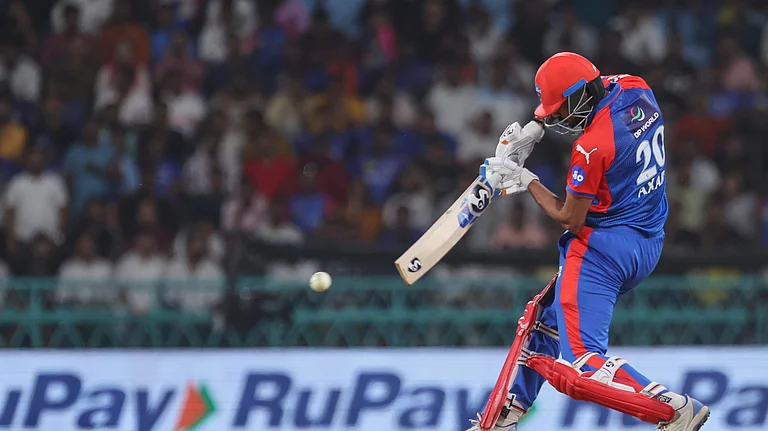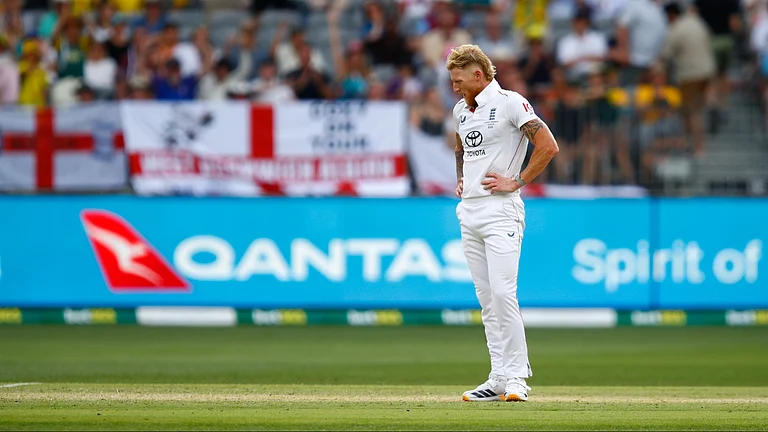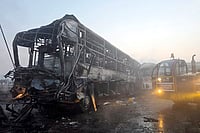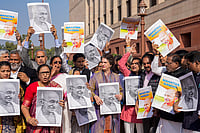VIRTUALLY all shades of political leaders in Srinagar describe it as a mindless massacre. The predawn swoop on March 30 by the Special Operations Group (SOG) of the Jammu and Kashmir Armed Police (JKAP) on a group of Jammu and Kashmir Liberation Front (JKLF) militants cooped up in a house in the Hazratbal complex in Srinagar left all 23 militants inside dead. With this, practically the entire Sidiqi faction of the JKLF, including its leader Shabir Sidiqi, has been eliminated.
Unlike the earlier action in Hazratbal on March 24, when nine JKLF militants and two JKAP policemen were killed in an exchange of fire, this time around there is a wave of sympathy for those dead. The popular perception is that the police just executed a predetermined action plan.
In a sudden change of tack, the All Party Hurriyat Conference (APHC)—which had after the March 24 shootout in Hazratbal dismissed the entire incident as a "drama enacted by India to wriggle out of elections in Kashmir"—was quick to condemn the killings. The Hurriyat's revised stand is that "innocent soldiers" were "butchered" by the "Indian government". A four-day bandh was immediately announced by the remaining leadership of the JKLF (Sidiqi) faction and the police had to clamp curfew in sensitive areas. Observers predict an escalation of violence in coming weeks.
Though accusing fingers are being pointed at the police, IGP (Kashmir) P.S. Gill points out that the operation was necessary because the militants "were trying to re-enter the shrine". The militants, following an agreement with police officials after the March 24 exchange of fire, had been allowed safe passage from the shrine to two houses within the Hazratbal complex where they had stayed prior to the shootout. Here, they were kept virtually under arrest and the houses were surrounded by a posse of BSF and JKAP men.
The May 30 operation began at 4 am when three companies of the SOG threw a loose cordon around the two multi-storeyed houses. A police officer who witnessed the operation says that till 5.25 am the militants were being asked to surrender. Five minutes later, the militants opened fire. The SOG retaliated and the exchange of fire lasted four hours. The militants showed no signs of giving up. Finally, mortar shells were fired and both houses caught fire. Some of the bodies of the slain militants were charred beyond recognition.
According to police officials, the militants' surrender had to be effected because the JKLF wanted to ban prayers inside the shrine unless the agreement reached with the authorities on March 26 was implemented. The agreement, according to them, was that security forces would be totally removed from the shrine complex. The Muslim Auqaf Trust, which manages the shrine, had backed the militants and said that prayers would be stopped if the besieged militants were not treated humanely.
Top police sources point out that the decision to either arrest or kill the militants was taken on March 27, with evidence pointing to plans being made by the group to steal the holy relic, a hair from the beard of Prophet Mohammad. The police say the militants even planned to destroy the relic. The disappearance of the holy relic in December 1963 had led to widespread agitation in the Valley. Fearing an encore, the authorities decided on a tough stand.
However, the strategy of the authorities seems to have backfired, says a Hurriyat leader: "If the militants had been arrested, no tears would have been shed for them. But now it's being seen as a massacre of Kashmiris. Whatever the differences people may have had with Shabir Sidiqi, no one can ignore what has happened. It is most unfortunate. The police action has turned former enemies into friends."
The Hazratbal episode has created, for the public, martyrs out of militants who had earlier been termed 'agents of India'. After the March 24 shooting, senior Hurriyat leader Abdul Ghani Lone had even questioned why the authorities were entertaining the militants in houses at the complex.
Preceding the March 30 killings, sentiments had been so much against the militants that when the shrine was thrown open to the public on March 27 after the militants were forced out of the shrine, a large number of people including some women participated in an operation cleanup. The crowd assembled at the shrine was of the opinion that the militants had desecrated the sanctity of the holy place and even went about demolishing the sheds which the militants had set up inside the complex for use as torture rooms and to keep hostages.
According to local residents, Basharat Raza, the JKLF commander-in-chief who was slain in the March 24 shootout, had been terrorising the neighbourhood. In the fortnight before the first shootout, Raza had summoned four head of departments from Kashmir University and demanded that they appoint staff as per his direction. Earlier three members of the Muslim Auquaf Trust, which manages the Hazratbal shrine, were held hostage by him for nine hours in a bid to extract money. A professor pointed out: "The entire campus is patrolled by the BSF, but Raza and his men would drive in and take away people. The BSF never dared stop him. We believe the security forces were hand-in-glove with Raza."
But now no one speaks ill of the slain militants or the JKLF faction. Talk now revolves around how the Sidiqi faction, which functioned with BSF support, had been cheated.
The May 30 operation and its possible backlash is likely to cast its shadow on polls in Kashmir next month. With the National Conference deciding to boycott elections, the exercise in the Valley could well be the "farce" that many Kashmir politicians now predict it to be.






















